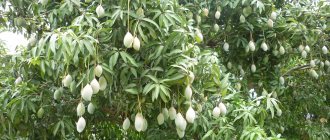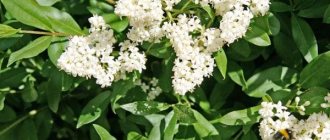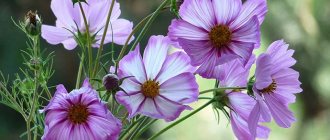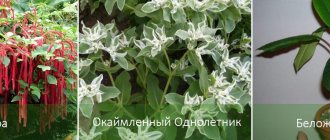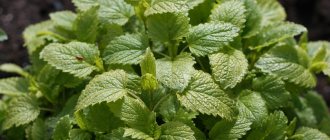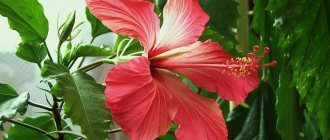Have you ever selected seedlings for your garden with an eye to their decorative value in winter? We offer you a selection of trees and shrubs that will color the most gray and faded landscape.
Winter doesn't have to be synonymous with a boring, gray garden! With the right selection of trees and shrubs, your personal corner of wildlife can sparkle with a rich variety of colors and textures.
Take note of our list!
Description of the elm tree
Mature trees of most types of elm look like powerful giants, sometimes reaching a height of up to 40 meters, and a trunk diameter of up to 2 meters. Their crowns are dense and cylindrical in shape. The bark on the trunks has a rich dark brown color, and the tree remains smooth for a long time.
Elms bloom in April-May from several days to a week: small greenish-yellow flowers are collected in spherical bunches. At the flowering site, flattened fruits-nuts, bordered by wings, sprout. They ripen with the onset of warmth, and are carried by the wind throughout the area. Branched elm is densely covered with foliage with characteristic jagged edges. A slight slope can be observed at the base of the oval leaves.
When describing the elm tree, it is worth mentioning its root system, which can successfully compete with oak. This is a highly developed network with individual roots going both to the surface and to the depth. In podzolic soils they are widely separated from each other. Sometimes, especially in large trees, disc-shaped roots may form at the foot of the trunk, serving as their support.
Tree variety
A twenty-meter tall tree with a lush green crown that loves the sun is called Hornbeam Elm. Elm leaves have a dark green (bottle) color and an oblong, jagged shape with a smooth surface. The trunk is not smooth, and there are corky growths on the branches. It blooms with a reddish inflorescence for quite a long time, after which it is overgrown with leaves that have a rich yellow color in the fall. The fruitful lionfish reaches twenty millimeters. This view decorates the park area with a dense plant wall.
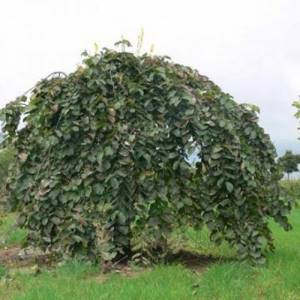
Hornbeam elm.
Dense elm has a drooping, dense crown of leathery leaves . Elm grows up to thirty meters even in drought conditions and has dark furrowed bark.
Coniferous and deciduous forests, where there is a lot of shade, are complemented by Lobed elm , which can withstand frosts down to minus thirty degrees.
The wild elm, which is observed in Siberia, Kazakhstan and East Asia, is called Euonymus or Pinnately branched elm, Karagach . The scorching sun in these areas does not prevent the tree from developing on sandy and rocky soil, where the salt content is high. A tree of this type is the size of a five-story building. The leaves are feathery, smooth, small and collected in openwork bunches, and the bending branches are thin. Due to the sparse crown, there is little shade from the elm, but planting an ornamental tree in city squares and parks, with appropriate care and pruning, can help enrich the area with oxygen and create a recreation area in the summer.

Elm.
The Squat Elm has a rounded crown of small leaves and a small height . In the urban conditions of the central part of Russia, it is possible to grow this tree, but it is difficult, since the elm is not very winter-hardy and loves fertile soil with plenty of moisture.
Among the elm varieties, the following are also noted:
- Japanese elm or birch bark;
- Mountain or rough elm;
- Androsova elm;
- English elm.
Trees differ in size, flowering period, shape and structure of leaves, flowers, stem bark, fruiting cycle, and resistance to soil and weather conditions.
The described types of elm can help in choosing a plant to plant for decorative purposes.
Features of elms
A remarkable feature of elm trees is that some of their species can grow on quite difficult soils. They tolerate drought, wind, severe frosts well, and are able to grow on saline lands. That is why these trees have become indispensable in steppe forest plantations, shelterbelts and water protection zones. But elms grow more happily where the soils are rich and loose. Thus, their life expectancy will entirely depend on the conditions of their growing environment, and usually on average it is 200-400 years.
Planted elms with their powerful, beautiful crown look decorative and provide diffused shade, which is why they are often used for urban landscaping. They look great in both single and group plantings. The foliage is brightly colored and, depending on the type of tree and time of year, is replete with burgundy, yellow-orange, green, and brown flowers. Elm foliage tolerates exhaust gases well, purifies the air, and traps dust.
Heptacodium miconioides
Heptacodium myconium has many wonderful names: northern myrtle, German rhododendron, and autumn lilac. But best of all, its appearance reflects the nickname that people gave to the plant - the flower of seven sons.
The thing is that heptacodium inflorescences are collected in lush paniculate brushes of 7 pieces. During flowering, they are strewn with snow-white flowers, and at the end they acquire a dark pink color - this is the color of the sepals in which the purple fruits are “hidden”. It is the faded heptacodiums that resemble lilac or rhododendron bushes.
The flowering period falls at the end of summer - beginning of autumn. At this time, the corner of the garden occupied by heptacodium is filled with a pleasant sweet aroma, somewhat reminiscent of the smell of climbing honeysuckle Honeysuckle, and butterflies flutter around the fragrant bush.
We are interested in the appearance of this little-known shrub in our area in winter. Pink brushes last until the very first frost. But even without such elegant decoration, heptacodium attracts attention. Its shoots are covered with exfoliating bark of a grayish-barley hue, very similar to the bark of a plane tree.
The culture can be formed not only as a shrub, but also as a small tree. Heptacodiums formed on three trunks look the most beautiful. An adult plant grows up to 3-5 m.
This ornamental plant has “won” the recognition of many fans in Canada and the USA, and has also managed to gain popularity in Western Europe. It is quite possible to grow it not only in the Moscow region, but also in the middle zone - according to breeders, heptacodiums should tolerate frosts down to -29°C.
Heptacodiums are planted in well-lit areas protected from the wind.
Elm forests
In nature, pure elm forests are extremely rare. Their massive plantings are observed in coniferous-deciduous and broad-leaved forests in Asia, Europe, Scandinavia, North America, and the Balkans. And if in Europe the smooth, rough, elliptical, leaf elm is more common, then in Asia it is the squat, valley, lobed elm, and in America it is the American elm.
In Russia, deciduous elm trees grow in the Far East, the Southern Urals, the southeastern part of the Russian Plain and the Central region. The most common forests contain the following types of elms: leaf, lobed, small-leaved, smooth, cork, mountain (rough), large-fruited and Japanese. Preferring fertile soils, they grow mainly along the shores of lakes and in floodplains. The total area of such plantings occupies 500 thousand hectares.

Smooth elm
Smooth elm (or common elm) can be found mainly in deciduous forests in central Russia, Siberia, and also in Kazakhstan. The elm tree easily tolerates shade and harsh winters, but prefers moist and fertile soils. Its height is on average 25 meters, and its wide crown is shaped like a ball. Elms of this species live up to 300 years, and their intensive growth is observed immediately after planting.
The peculiarity of the smooth elm is its thin hanging branches with a smooth and shiny bark. In older trees, this bark cracks and forms peeling plates over time. The elliptical leaves have a smooth surface on one side and are covered with hairs on the other side. With the onset of autumn they take on a rich purple color.

Large-fruited elm
Large-fruited elm is widespread in China, Korea, Mongolia and the Russian Far East. The species got its name from its large edible fruits. Elm looks like a shrub or small tree 6-8 meters high. Its dark brown or gray bark can crack deeply. The leaves have a pointed apex and an unequal wedge-shaped base, and the edges are edged with short serrated teeth. Being one of the most unpretentious and drought-resistant plants, elm grows in open places: along rocky crevices, ravines, on rocky slopes, at the foot of hills and on scree along rivers.
The spreading impressive crown, shiny leaves and large fruits make this type of elm decorative, as a result of which it is successfully used in landscape design and urban landscaping.
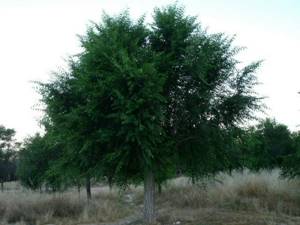
Botanical description[ | ]
A tree up to 40 meters high with a wide-cylindrical, slightly rounded crown, living up to 200-250 years[7]. At a young age it grows very quickly, after 40-50 years its growth slows down. The trunk of an old elm can reach a meter in diameter. The branches are thick, directed upward. The bark is brownish-brown, cracking, and peels off in thin sheets. At the base of the trunk of large trees, flat, board-shaped roots are sometimes formed, which serve as additional support[8]. The shoots are light brown, shiny, sometimes with a gray coating and lentils.
The leaves are simple, ovate or oval, with a pointed apex, strongly unequal at the base, dark green in color (lighter below), on short petioles. Leaf length up to 12 cm, width up to 8 cm. The edge of the leaf blade is double-toothed, the upper side of the leaf is shiny, the lower side is bare or softly pubescent.
The flowers are small, bisexual, collected in bunches on long stalks. The perianth is five- or eight-lobed, unequal. Smooth elm blooms in April - May, before the leaves bloom, and is pollinated by the wind.
The fruit has a round or oval pubescent wing, in the center of which there is a seed. The fruits hang in bunches on long stalks.
| Smooth elm. From left to right: plank roots; branch with leaves and fruits; flowers; fruits close-up; fruit |
small-leaved elm
Small-leaved (or squat) elm is widely distributed in natural conditions on the islands of Japan, northern Mongolia, eastern Kazakhstan, the Far East and Transbaikalia of Russia. It is also successfully cultivated in North America and Southern Europe. Mature trees of this species are of insignificant height and barely reach 15 meters, and their trunk diameter is no more than a meter. Elms have a dense tent-shaped crown, sometimes growing as a bush. Thin yellowish-green branches are strewn with small, simple, elliptical or broadly lanceolate leaves ranging from 2 to 7 cm in length. In autumn they acquire an olive-yellow color.
Small-leaved elm is very light-loving and unpretentious to the soil; it also tolerates frost and drought well. Thanks to these biological features, it is successfully used in forest shelterbelts and for forest restoration.
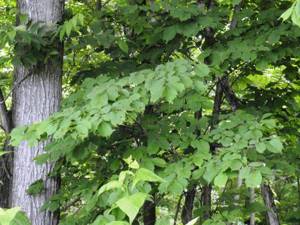
White willow (Salix alba)
Some types of willow can also become a worthy decoration for a winter garden. For example, white or silver willow. Of course, the willow, which has long become familiar and grows in almost every yard, is unlikely to surprise anyone. But its unusual variety, Vitellina, will certainly attract attention with the bright shade of its bare branches.
White willow variety Britcensis
Willow Vitellina of the Britzensis variety will enchant you with the fiery orange-red color of the shoots, the Yelverton variety is orange, and the Golden Ness variety is golden.
White willow variety Golden Ness
White willow quickly grows in height - up to 1.2-3 m per season. An adult tree grows up to 7 m. This must be taken into account when planting.
It is best to plant the plant in sunny areas with moist, loose loamy soil.
White willow Yelverton
White willow is not afraid of frost and drought. In addition, it can be planted near bodies of water.
Elm lobed
The lobed (or split) elm is biologically close to the rough elm, common in Europe. Under natural conditions, it is found in the Far East, Sakhalin, Japan, Korea and China. It grows mainly in mixed forests of foothills and on mountain slopes, reaching a height of up to 700 meters above sea level. The species owes its name to the original shape of large leaf blades resembling blades. Its trees with a dense cylindrical crown reach an average height of 25 meters.
The lobed elm grows very slowly, by the age of 30 its height is only 8 meters. It is more demanding on soils, compared to its other relatives, and is not resistant to salts. At the same time, it is shade-tolerant, wind-resistant and tolerant of frost, although young elm trees often freeze slightly in winter.

rough elm
Rough elm (or mountain elm) grows in Eastern and Western Europe, and is found in deciduous forests in the European part of Russia. Straight-trunked trees have smooth dark bark with brown branches and a rounded, lush crown. Large dark green leaves on very short petioles grow in strict order, so the foliage almost does not allow light to pass through. It has a rough surface on top and hairy underneath, externally presenting certain patterns. When autumn arrives, the leaves turn a rich yellow color.
The rough elm is picky about soil and moisture, but gets along well in urban conditions - it is gas-resistant. Under favorable environmental conditions, the elm tree reaches a height of up to 35 meters and lives up to 400 years.

Hornbeam elm. Blank
For medicinal purposes, the leaves and bark of hornbeam elm are used. There is also information that fruits can also be used. They begin to collect bark from young branches in mid-spring from those trees that are about to be cut down. It must be cut with a special knife and dried in a well-ventilated area. Well-dried bark has no odor, tastes bitter, and if you start chewing it, a so-called mucous substance will be released.
Leaves are harvested in warm and dry weather from late spring to early summer. You need to dry it in the shade, sometimes turning it. It is best to store the dried collection in wooden containers or specially sewn bags. Shelf life up to 2 years.
Hornbeam elm
Hornbeam elm is a luxurious deciduous tree with a spreading crown, reaching a height of up to 35 meters and a trunk diameter of more than 150 cm. It is distributed in the Caucasus, Central Asia, North Africa and the European part of Russia. The wide trunk of the tree is covered with smooth bark from below, and in the area where branches appear it becomes rough. Its long branches are spread out like a fan and covered with serrated unequal leaves, very varied in size. The elm tree blooms generously in the spring with small flowers, and towards autumn bears fruit with white nuts.
This type of elm is popularly known as elm. It is characterized by strong salt tolerance and drought resistance, therefore it is widely used in steppe breeding, arid areas, and in shelterbelts.
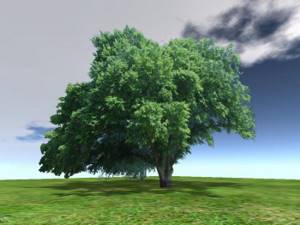
Hornbeam elm. Application
Medicines that include small elm (hornbeam) affect the functioning of the cardiovascular system, regulate the functioning of the thyroid gland and metabolism in the body. They are taken for colds, gastritis and stomach ulcers, as well as for vascular diseases, skin cancer, and syphilis.
Young and not hard elm bark cleanses and stops blood, relieves pain, kills germs, heals wounds, protects the body from colds, and also has diuretic, astringent and diaphoretic properties. Doctors recommend taking it for loose stools, cystitis, edema, inflammation of the uterus, fever, pain in the joints, and also as a drug that slows down the absorption of cholesterol into the blood. The leaves are taken as powder if you have problems with the kidneys and intestines.
All kinds of decoctions and infusions from the bark are used externally, making various baths and rubdowns for skin problems. They can be taken in the form of baths for diseases such as hemorrhoids and for wet dressings if rheumatism, polyarthritis and arthritis are tormented. Freshly collected leaves and young bark, crushed, are applied to open and long-lasting wounds for quick healing.
Traditional healers have also found use for elm fruits; they are boiled in fresh milk and taken for gonorrhea.
Breeding
Elms reproduce by self-seeding. Their seeds ripen in May-June and lose their viability in a short time. Therefore, only freshly collected material will be suitable for planting. In nature, they can also reproduce by shoots and root suckers, but for amateur nurseries such methods are ineffective when breeding trees.
It is recommended to store elm seeds in conditions of good ventilation for no more than one week until sowing. A couple of days before planting, they are moistened and treated with a fungicide. Planting sites do not require preliminary preparation, but you can add a little mineral fertilizer to the soil. The seeds are sown in rows at a distance of 20-30 cm between the holes at a shallow depth - only 1 cm. They are covered on top with hay, moss or a thin layer of soil and watered well. Shoots appear within a week. In the first year of life, elms grow up to 15 cm, in subsequent years they add up to 40 cm.

Interesting Facts
- The famous London Bridge owes its stability to the elm wood that was used in its construction.
- In Korea, there is an elm tree whose age has exceeded 800 years. It is very small in height, only 7 meters, but in diameter it reaches almost 2 meters.
- In ancient times, the elm was used to support a vineyard, causing the Greeks to associate it with the god of wine, Dionysus.
- Elm fruits are widely used in Chinese cuisine and are a common ingredient in salads.
- The aroma of elm wood acts on humans as an antidepressant and gives a calming effect.
- Until recently, on Povarskaya Street in Moscow, a long-living elm, which witnessed the fires of 1812, was “whileing out” its old age. But the tree could not withstand the abnormal heat of 2010 and withered.
- Many buildings of the beautiful Venice, the famous city on the water, stand on stilts made of elm.
- The Slavic name for the elm tree comes from the verb “to knit,” since the tree’s twigs were successfully used in the process of knitting sleighs, baskets and other household utensils.
- In England, the elm and the vine symbolize faithful lovers.

